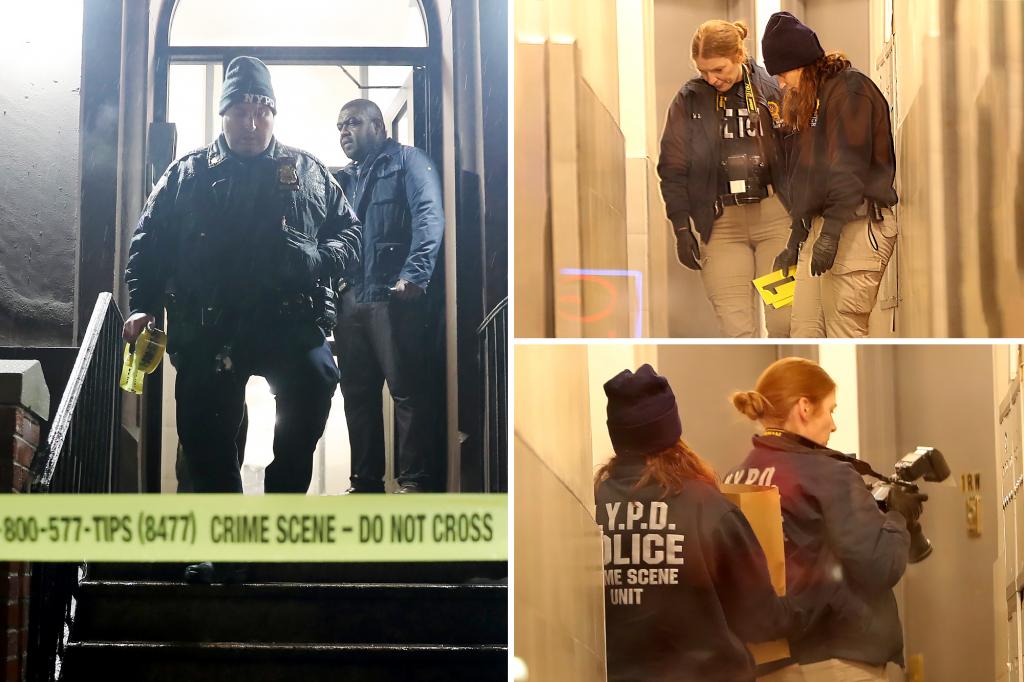The early morning quiet of a Hell’s Kitchen neighborhood was shattered on a Saturday by the sound of gunshots, marking another violent incident in a community grappling with a surge in crime. Sharief Jackson, a 35-year-old resident, became the latest victim, succumbing to two gunshot wounds to the chest following an altercation with an unidentified individual. The incident occurred inside Jackson’s apartment building on 49th Street, nestled between 8th and 9th Avenues. Though conscious when discovered by police outside the building, Jackson tragically passed away after being transported to NYC Health and Hospitals/Bellevue. The perpetrator remains at large, leaving a community on edge and searching for answers.
This tragic event underscores a disturbing trend of escalating violence in the Midtown North Precinct, encompassing Hell’s Kitchen. According to NYPD crime statistics, the area has experienced a staggering 66.7% increase in homicides this year compared to the same period in 2023, with five murders recorded through December 15th. Beyond homicides, other violent crimes, including robberies, assaults, rapes, and burglaries, have also seen an uptick, fueling a sense of unease and fear among residents who have witnessed the neighborhood’s transformation over the years. The once-celebrated gentrification of Hell’s Kitchen, which brought a period of relative peace and prosperity, now appears to be receding, replaced by a resurgence of crime reminiscent of a darker era.
Long-term residents like 67-year-old Thomas Kurilla have expressed their concerns about this unsettling trend, observing the neighborhood’s regression back to the crime levels prevalent in the 1980s. Kurilla’s sentiments are echoed by other residents, including one who, standing outside Jackson’s crime-scene-taped building, lamented the escalating violence and expressed a desire for improved safety and security. The resident’s planned escape to Australia for vacation seemed almost symbolic of a broader desire to find refuge from the escalating tension and fear gripping the community.
The incident involving Sharief Jackson serves as a stark reminder of the complex interplay of factors contributing to urban crime. While gentrification may bring about improvements in infrastructure and economic opportunities, it can also exacerbate existing social inequalities and displace vulnerable populations, potentially contributing to increased crime rates. Moreover, the easy availability of firearms remains a significant concern, enabling individuals to resort to violence with devastating consequences. The search for Jackson’s killer continues, as does the search for solutions to address the underlying causes of the rising crime in Hell’s Kitchen.
The resurgence of crime in Hell’s Kitchen highlights the ongoing challenges faced by urban centers across the country in balancing development with public safety. As communities grapple with the complex interplay of socioeconomic factors, access to resources, and law enforcement strategies, incidents like the murder of Sharief Jackson emphasize the urgent need for comprehensive approaches to crime prevention and community safety. It is crucial to address the root causes of violence, invest in social programs, and promote community engagement to create safer and more resilient neighborhoods.
The fear and uncertainty permeating Hell’s Kitchen in the wake of Jackson’s death underscore the importance of collaborative efforts between law enforcement, community leaders, and residents. Building trust between police and the community is essential for effective crime prevention and response. Moreover, fostering a sense of collective responsibility and empowering residents to actively participate in crime prevention initiatives can contribute to creating a safer environment for all. Ultimately, addressing the issue of rising crime requires a multi-faceted approach that acknowledges the complex social dynamics at play and prioritizes the well-being and safety of all community members.

